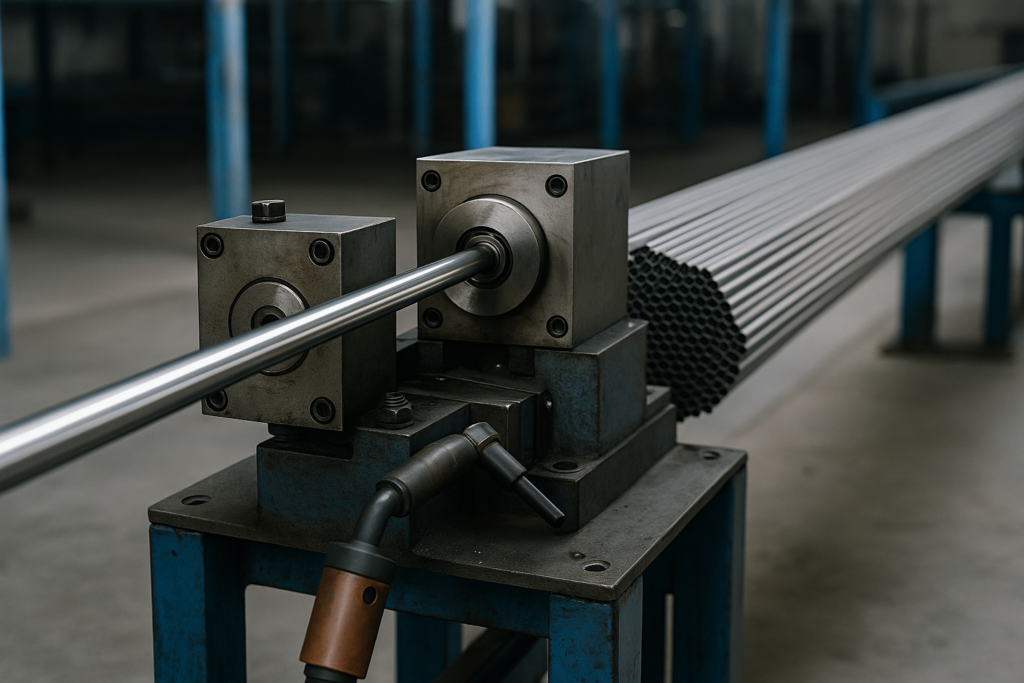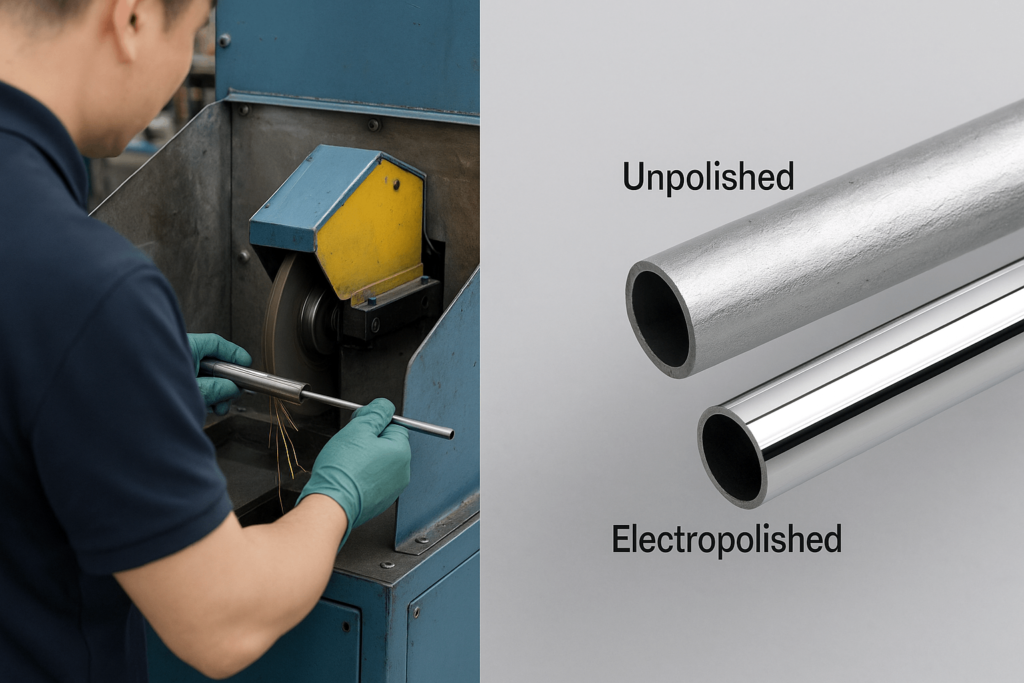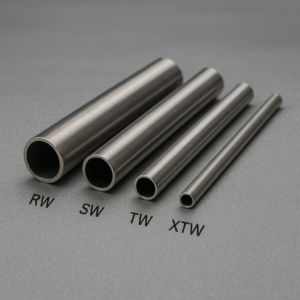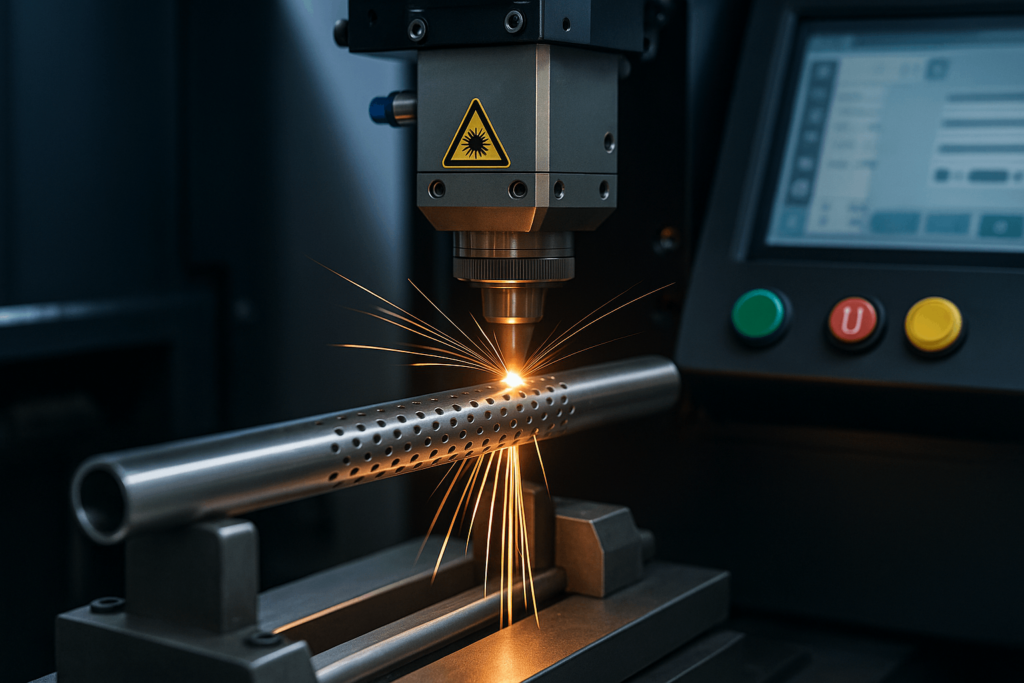For engineers, product designers, and industrial procurement teams sourcing precision metal components, hypodermic tubing is more than just a small metal tube—it’s the backbone of high-precision systems in medical, analytical, and aerospace industries.
This guide equips you with actionable insights to navigate the specifications, materials, and advanced processes behind stainless steel hypodermic tubing. From selecting the right wall thickness and temper to understanding corrosion resistance and finish treatments, we offer a practical roadmap to help you source with confidence.
Whether you’re an OEM scaling production or an R&D engineer prototyping a new assembly, this resource highlights the performance-critical details that drive both function and manufacturability.
Chapter 1: The Making of a Micro-Component: A Look Inside the Manufacturing Process
For a procurement manager or engineer, understanding how a hypotube is made is critical to understanding its performance limits, quality consistency, and cost drivers.
The hypodermic tubing manufacturing process is a journey from a simple metal strip to a high-performance component. At each step, manufacturers introduce specific mechanical properties to ensure dimensional precision and consistent quality.
1.1 The “Welded & Drawn” Gold Standard
Since the 1960s, the “welded and drawn” method has remained the industry benchmark for medical-grade tubing—balancing quality, consistency, and cost-effectiveness.
The process starts with a flat strip of high-quality stainless steel. Technicians progressively bend it into a circular, open-seam tube. They then seal the seam using high-precision Tungsten Inert Gas (TIG) welding.
Following this, the welded tube undergoes drawing through a series of progressively smaller dies. A hardened rod, or mandrel, sits inside to preserve dimensional integrity during the reduction.
This drawing step achieves two goals: it reduces dimensions and applies cold work to refine the grain structure, blend the weld, and create a seamless appearance. As a result, the final product features a full-hard temper with excellent rigidity and tensile strength.

1.2 The Critical Finishing Touches: Why Secondary Processing Is Everything
After forming the raw tubing, manufacturers implement secondary processes—each vital to achieving medical-grade performance.
Cutting & Deburring
Clean, burr-free cuts reduce risks like tissue trauma or emboli. For high-precision and high-volume applications, Electrochemical Cutting (ECC) proves ideal. This method integrates cutting and deburring in one pass using an electrolyte-charged abrasive wheel.
In addition, advanced techniques such as Abrasive Flow Machining (AFM) polish internal surfaces and eliminate microscopic burrs, further enhancing part safety.
Pointing Perfection with ECG
Needle tips must feature sharp, burr-free bevels. Unlike traditional grinding, which introduces heat and requires post-polishing, Electrochemical Grinding (ECG) employs electrolytic action. This method creates precise bevels without thermal stress or residual burrs. Consequently, ECG streamlines production and boosts consistency.

Surface Integrity Showdown: Electropolishing vs. Passivation
Surface finish plays a key role in both performance and biocompatibility. In this context, electropolishing and passivation each serve distinct purposes.
- Passivation applies chemical baths to remove surface iron and strengthen the protective chromium-oxide layer—an approach well-suited for non-critical cleaning.
- Electropolishing, on the other hand, dissolves surface peaks through electrochemical action. This process generates a smoother finish (Ra improved up to 50%) and enhances corrosion resistance with a chromium-rich passive layer.
| Feature | Passivation | Electropolishing |
|---|---|---|
| Process | Chemical (Acid Bath) | Electrochemical (Acid Bath + DC Current) |
| Primary Goal | Remove free iron, enhance passive layer | Remove surface layer, deburr, enrich surface |
| Surface Finish (Ra) | No change to surface roughness | Improves Ra by up to 50% |
| Corrosion Resistance | Good | Excellent |
| Ideal Use Cases | Non-critical components, basic cleaning | Implants, surgical tools, precision fluid paths |
Chapter 2: The Engineer’s Selection Matrix: Choosing the Right Hypotube
Selecting hypodermic tubing requires engineers to evaluate material, dimensions, and mechanical characteristics. These factors ensure that the tubing matches the specific application.
2.1 The Material Showdown: 304 vs. 316L vs. Nitinol
304 Stainless Steel remains cost-effective and works well for general-use medical instruments.
316L Stainless Steel introduces molybdenum to boost chloride resistance and enhance biocompatibility. Its low-carbon composition avoids carbide formation during welding.
Nitinol offers superelasticity and shape memory, making it a standout choice for kink-resistant guidewires and self-expanding stents. In fact, many Drug-Eluting Stents (DES) rely on nitinol for performance.
2.2 The Gauge & Wall Thickness Trade-Off: A Balancing Act
The Birmingham Wire Gauge (BWG) system governs tubing sizes. Generally, higher gauge numbers correlate with smaller diameters. Meanwhile, wall thickness options include:
- Regular Wall (RW): Balanced strength and internal diameter
- Thin Wall (TW): Greater flow capacity, slightly reduced rigidity
- Extra-Thin Wall (XTW): Maximum flow rate with minimum strength
These options influence fluid dynamics and structural rigidity. Therefore, sourcing precision cut hypodermic tubes must consider these critical variables.

2.3 Temper: The Secret to a Tube’s Personality
Temper determines tubing flexibility and mechanical behavior:
- Full-Hard Temper: Rigid, high tensile strength—ideal for insertion tools
- Annealed / Quarter-Hard: More ductile—suitable for shaping or forming intricate components
When engineers align temper with functional requirements, they optimize both performance and reliability.
Chapter 3: From Clinic to Cosmos: Surprising Applications of Precision Tubing
Beyond hospitals, hypodermic tubing powers a wide array of high-performance systems.
3.1 Core Medical Applications
- Catheters and Guidewires: Offer directional control and mechanical support
- Surgical Tools: Provide structure in endoscopic and minimally invasive devices
3.2 High-Tech Industrial Frontiers
- Aerospace: Delivers fluid transport under pressure with corrosion resistance
- Laboratories: Operates in analytical tools like HPLC and syringes
- Robotics: Routes microcables and delivers motion control in compact spaces
Clearly, medical device tubing suppliers must support diverse environments with consistent output.
Chapter 4: The Next Frontier: How “Smart Tubes” Are Shaping the Future of Medicine
As precision medicine and minimally invasive techniques evolve, hypodermic tubing plays a more active role. In particular, advancements in microfabrication allow tubing to become multifunctional.
4.1 Drug-Eluting Stents (DES)
Nitinol tubes serve as scaffolds. A polymer coating releases medication gradually, preventing restenosis and reducing follow-up procedures.
4.2 Bioabsorbable Scaffolds
These temporary structures—often made from PLLA or magnesium—naturally degrade after healing. Therefore, no secondary removal surgeries are needed.
4.3 Laser Micromachining
Femtosecond lasers create micro-patterns without a heat-affected zone. As a result, OEMs benefit from clean cuts during prototype development and pre-production testing.

4.4 Medical Microrobotics
Tubing provides structural support and delivery channels for ultra-small robots. These robots handle diagnostics and precision therapy in previously inaccessible areas.
Altogether, these applications illustrate how OEM hypodermic tubing solutions empower future-ready medical innovations.
Chapter 5: Your Quick-Reference Technical FAQ
Q1: ISO 9626 vs ASTM A908? ISO 9626 applies to medical applications with stricter safety tests. In contrast, ASTM A908 suits general industrial tubing.
Q2: Electropolishing vs Passivation? Electropolishing delivers smoother finishes and better corrosion resistance. Passivation works well for non-critical components.
Q3: Can flexibility be customized? Yes. Laser-cut spiral slots enable flex zones while preserving strength.
Q4: Challenges of machining Nitinol? Its elasticity and work-hardening properties require special tooling and deep expertise.
Q5: What defines stainless steel biocompatibility? Key indicators include corrosion resistance, low toxicity, and compliance with ASTM F138 or ISO 10993.
Whether you’re prototyping a new surgical device or scaling production of industrial assemblies, YISHANG delivers precision stainless steel hypodermic tubing tailored to your needs.
📩 Contact us today to discuss your custom tubing project—from rapid sampling to mass production, backed by 26+ years of OEM metal fabrication experience.

